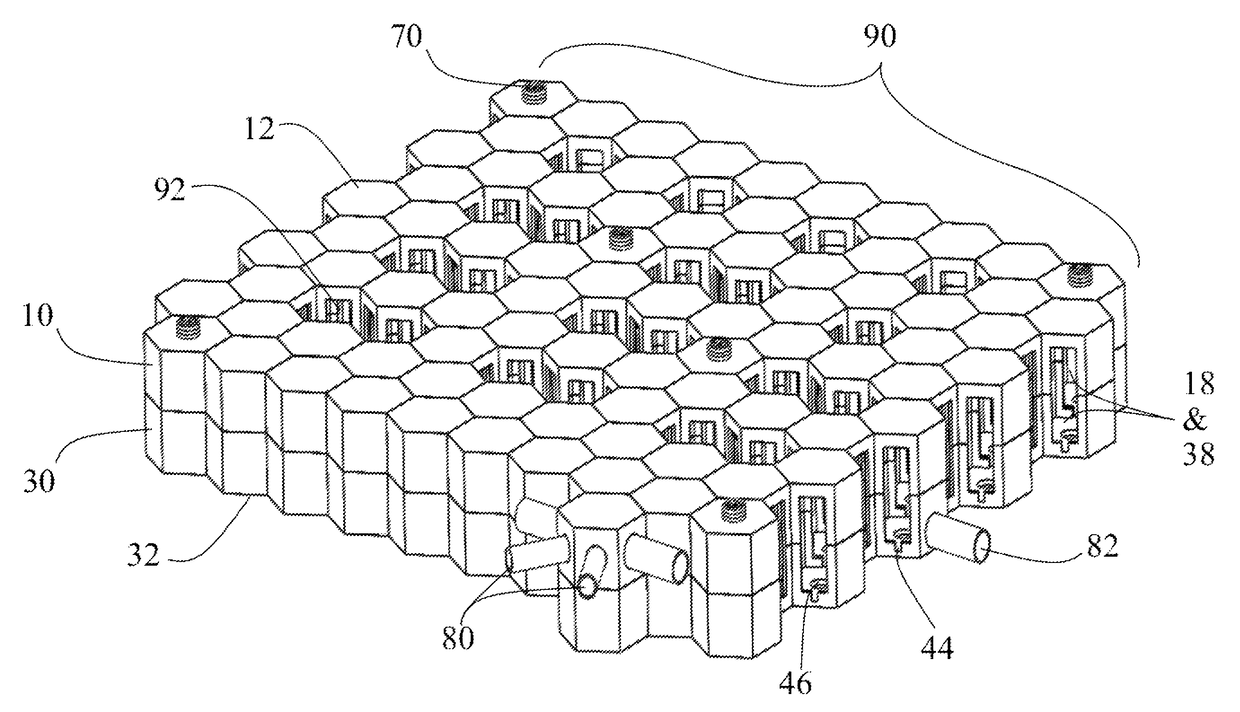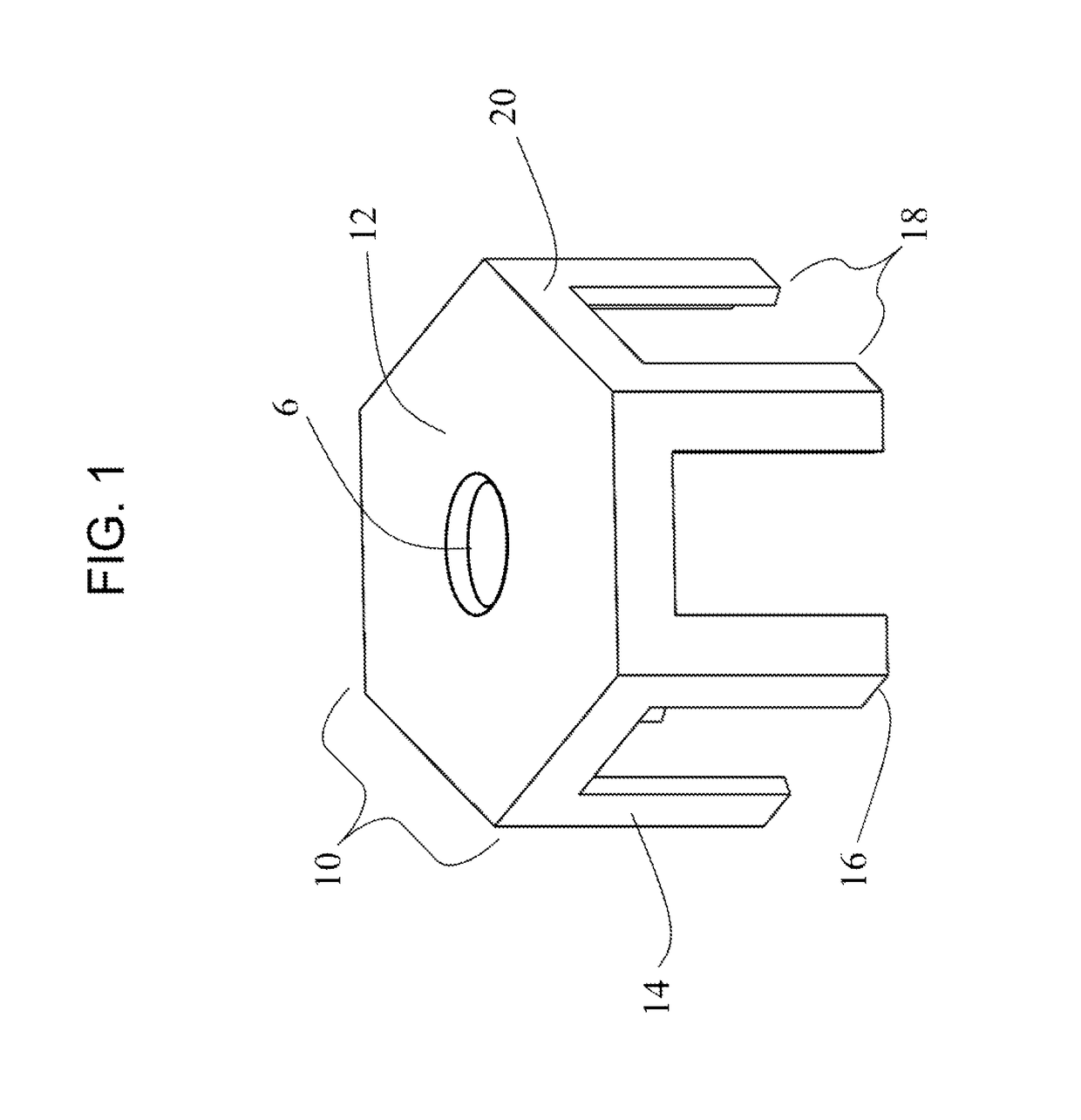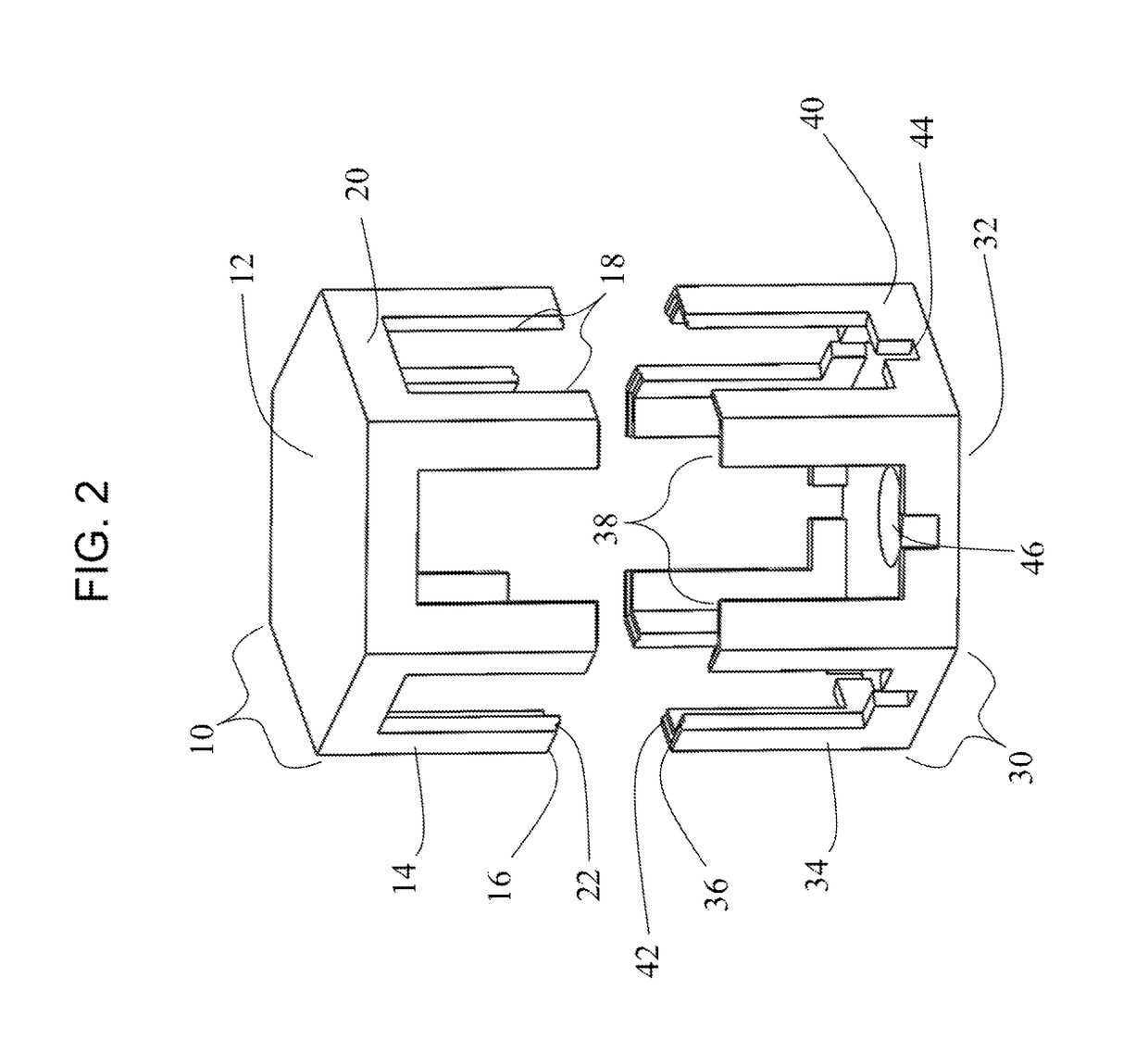Hexagonal module and assembly for storage of water underground
a technology of water storage and hexagonal modules, applied in the direction of sewage draining, sewer systems, construction, etc., can solve the problems of increasing the pollution level of water bodies and the environment, affecting the health of ecosystems, so as to improve the overall underground storage system, improve the effect of fluid communication, and increase the overall effect of the underground storage system
- Summary
- Abstract
- Description
- Claims
- Application Information
AI Technical Summary
Benefits of technology
Problems solved by technology
Method used
Image
Examples
Embodiment Construction
[0046]The present embodiment provides a hexagonal module and assembly of modules for the underground collection and storage of water. The hexagonal modules offer enhanced strength and efficiency individually and in assembly of multiple modules. Modules can be assembled into various shapes and sizes, all being of a honeycomb pattern, to meet the size, space and shape restrictions of locations where the assemblies are being installed.
[0047]The module assembly can be generally square, round, rectangular, L-shaped or other shapes to work around other underground structures, including but not limited to sewer lines, utilities, fuel storage tanks, water mains and others. The hexagonal shape and resulting honeycomb assembly provides greatly improved strength at increased depths when compared to currently available technologies and thus overcomes limitations with lateral soil pressures which increase proportionately to the depth below the ground surface.
[0048]Hexagonal modules and resulting...
PUM
 Login to View More
Login to View More Abstract
Description
Claims
Application Information
 Login to View More
Login to View More - R&D
- Intellectual Property
- Life Sciences
- Materials
- Tech Scout
- Unparalleled Data Quality
- Higher Quality Content
- 60% Fewer Hallucinations
Browse by: Latest US Patents, China's latest patents, Technical Efficacy Thesaurus, Application Domain, Technology Topic, Popular Technical Reports.
© 2025 PatSnap. All rights reserved.Legal|Privacy policy|Modern Slavery Act Transparency Statement|Sitemap|About US| Contact US: help@patsnap.com



